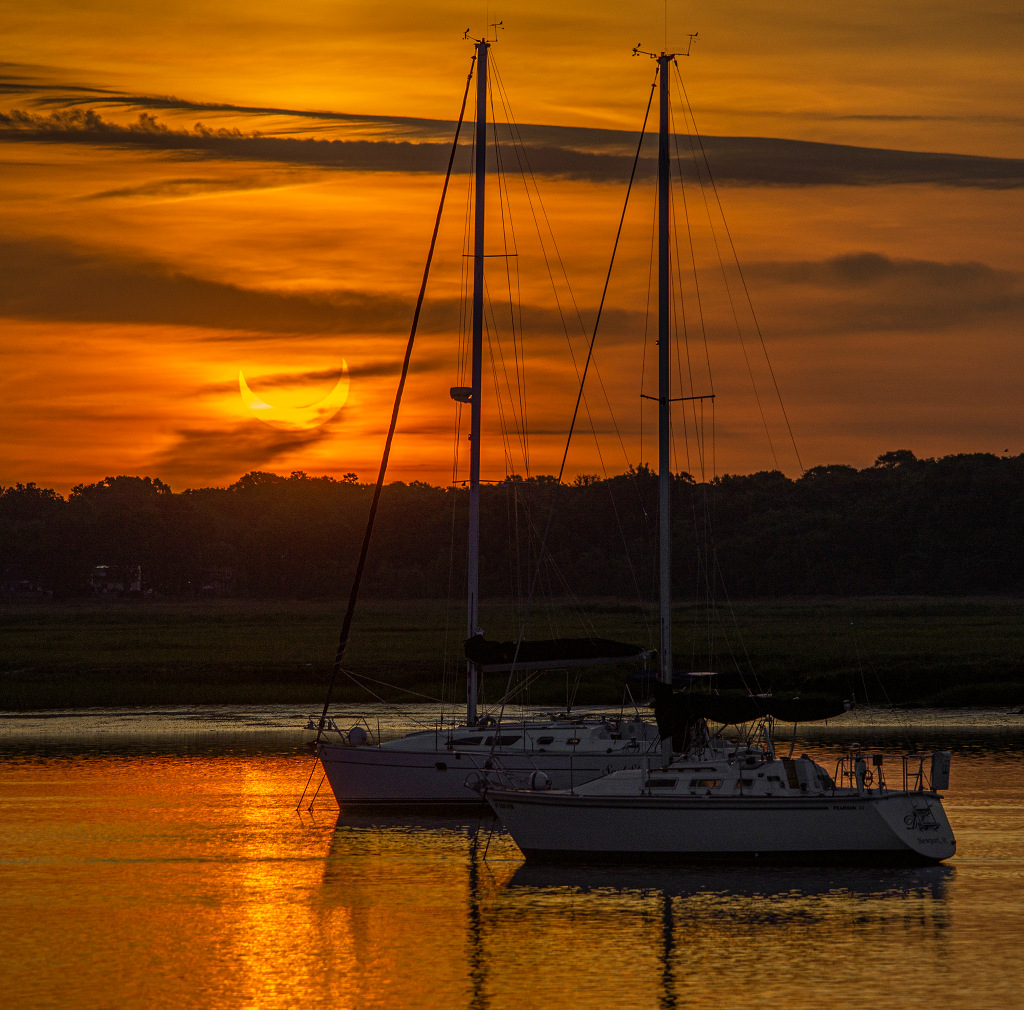2021年06月12日
Eclipse on the Water
Image Credit & Copyright: Elliot Severn
Explanation: Eclipses tend to come in pairs. Twice a year, during an eclipse season that lasts about 34 days, Sun, Moon, and Earth can nearly align. Then the full and new phases of the Moon separated by just over 14 days create a lunar and a solar eclipse. Often partial eclipses are part of any eclipse season. But sometimes the alignment at both new moon and full moon phases during a single eclipse season is close enough to produce a pair of both total (or a total and an annular) lunar and solar eclipses. For this eclipse season, the New Moon following the Full Moon’s total lunar eclipse on May 26 did produce an annular solar eclipse along its northerly shadow track. That eclipse is seen here in a partially eclipsed sunrise on June 10, photographed from a fishing pier in Stratford, Connecticut in the northeastern US.
Notable images submitted to APOD: June 10 solar eclipse
Tomorrow’s picture: Supercell Sunday
水面上的日食
影像提供与版权: Elliot Severn
说明: 日月食通常成对发生。在每年二次、每次为期约34天的交食季里,太阳、月亮和地球几乎排列成行。此外,能形成月食的满月与日食的新月,间隔比14天多一点。通常每个交食季,都会出现一例日偏食或月偏食。然而有时候在某个交食季里,如果新月与满月的排列非常相近,就有可能产生一对日全食(或日环食)和月全食。例如在目前这个交食季里,接续在5月26日的满月全食之后,在近北极区的月影带里,新月产生了一例日环食。这幅摄于6月10日的影像,就记录了从美国东北部的康乃迪克州史崔特弗镇的钓鱼码头看出去,此次日食事件的日出带偏食景观。
提交给APOD的著名图像:6月10日的日食
明日的图片: Supercell Sunday



